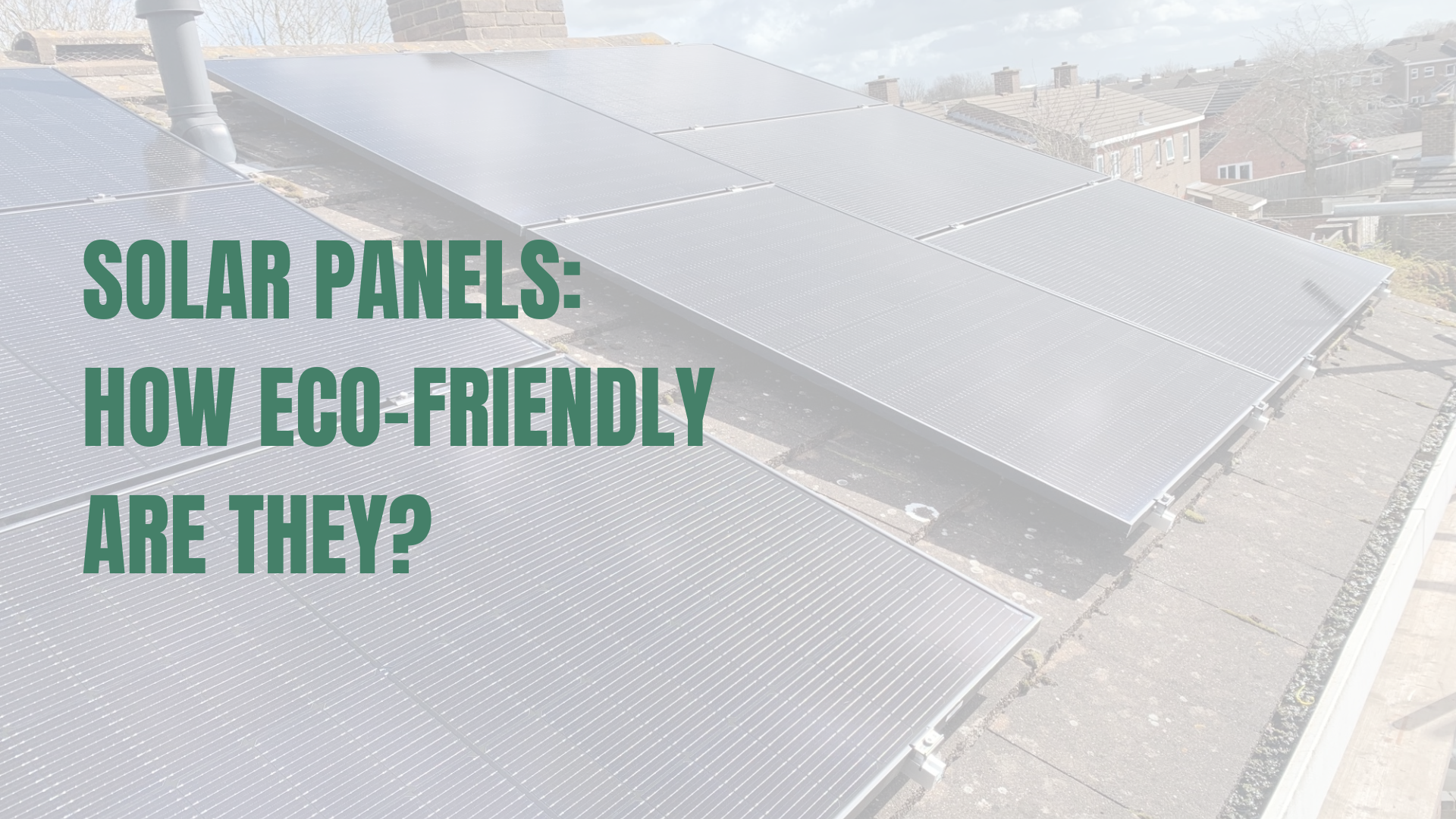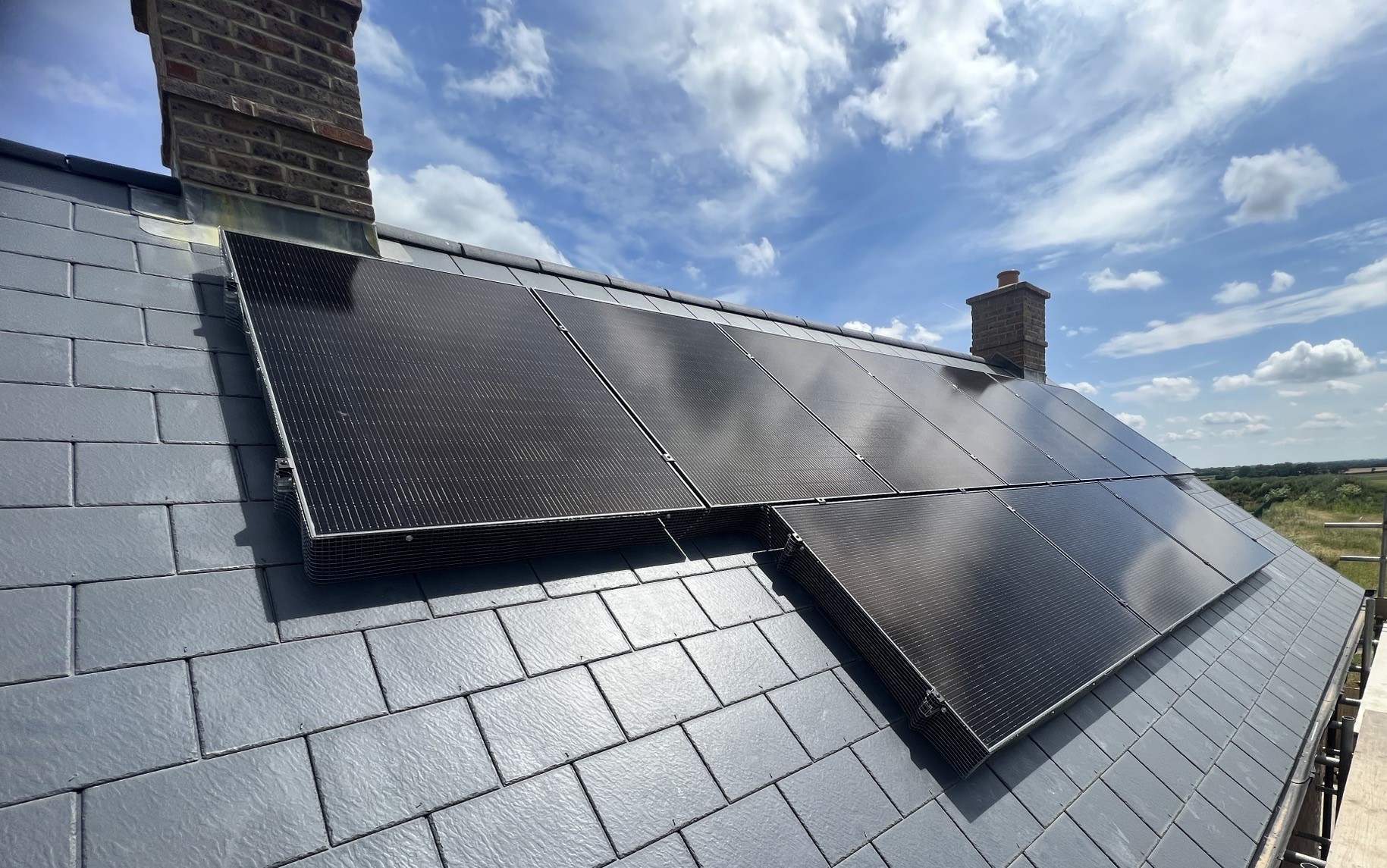At SolarTherm UK we’re passionate about helping homeowners make sustainable, long term investments that benefit the planet and their pockets. Solar energy is one of the most effective and affordable ways to reduce carbon emissions and achieve energy independence. But how eco-friendly are solar panels?
This in-depth guide will explore the environmental impact of solar panels, from how they’re made to how they’re recycled and explain why they remain one of the greenest energy solutions available.
Understanding the Environmental Impact of Solar Panels
Solar panels are a clean, renewable source of energy. Once installed they generate electricity without burning fossil fuels or releasing climate changing greenhouse gases. Like with any technology, there’s an environmental cost involved in manufacturing and transporting solar panels.
While solar panels are not entirely emission free, their impact is minimal compared to traditional energy sources. Improvements to manufacturing processes are improving year on year and the carbon footprint of manufacturing solar panels continues to decrease.
The International Panel on Climate Change (IPCC) said that the carbon footprint of solar panels is approximately 12 times lower than natural gas and 20 times lower than coal per kilowatt hour (kWh) of energy produced.
The Carbon Cost of Producing Solar Panels
Solar panels are typically produced from silicon semiconductors, glass and metals like silver, copper and indium. The raw materials are mined and refined, processes that emit greenhouse gases. The overall carbon costs are far lower than fossil fuel extraction and energy generation.
Studies show that the average solar panel emits around 50 grams of CO₂ per kWh during its early years of operation, but after just three years of use, most solar panels are carbon neutral, meaning they’ve saved more carbon than was produced in their manufacturing.
The lifespan of a solar panel is typically 25-30 years, although most panels can continue generating electricity efficiently for many additional years. The electricity that is generated is emission free, making it clean and good for the environment.
How Are Solar Panels Manufactured?
The early stages of solar panel production are energy intensive, purifying silicon and cell formation uses high levels of energy. China currently manfactures around 80% of the world’s solar panels. Most Chinese commercial scale electricity still comes from coal, contributing to the carbon footprint of global panel production.
In recent years, other countries, including the UK and US are expanding their own solar manufacturing capabilities, using cleaner energy sources. Shifting to cleaner energy sources is expected to result in a drastically lower emissions level from solar panel production over the coming decades.
At SolarTherm UK, we work closely with suppliers who prioritise responsible manufacturing and sustainable sourcing, helping every installation we deliver contributes positively to the environment. Our Bovill.tech solar panels are assembled in the UK, using components from the US, Italy, Turkey and China.
Mining and Materials: The Hidden Impact
Raw materials to create components of solar panels, like silicon, copper and tellurium, are mined. While mining has some environmental consequences, such as land disturbance and emissions, new developments are helping to reduce the long term effects. Land used for mining is returned to its natural state when materials are depleted.
Manufacturers are increasingly recycling raw materials and investing in energy efficient production processes. Reducing emissions and lessening the demand for new mining operations, makes solar more sustainable.
Solar Panels and Farmland: Can They Coexist?
A common misconception is that solar panels take away valuable agricultural land. In reality, solar and farming can thrive together, a concept known as agrivoltaics. Solar farms are often built on low-grade or underused land, which many farmers are now combining solar generation with livestock grazing or crop growth. Leafy greens and berries benefit from the shade provided by solar panels and animals grazing enjoy cooler temperatures and improved forage quality.
Co-locating solar energy and agriculture can help strengthen resilience for both industries. Energy companies pay farmers for the use of their land, giving them an additional and reliable annual income that can help stabilise farm finances against fluctuating crop yields or livestock prices.
At the same time, the land continues to serve a productive purpose — supporting livestock grazing, pollinator habitats, or shade-tolerant crops. This dual-purpose use of land not only enhances rural economic security but also contributes to the UK’s renewable energy goals.
At SolarTherm UK, we actively support projects that combine sustainable energy generation and responsible land stewardship, ensuring that solar power works in harmony with nature and local communities.
Solar Panel Recycling: The Next Frontier
As the first generation of large scale solar installations reach the end of their lifespan, the importance of solar recycling is growing. Without proper recycling, millions of tons of photovoltaic (PV) waste could end up in landfills. Solar panels are highly recyclable, with 95% of their materials, including glass, aluminium, copper and silicon being recovered and reused.
Environmental Benefits of Solar Energy
Despite the initial energy investment required to manufacture them, solar panels offer significant environmental advantages. Zero emissions during operation and reduced reliance on fossil fuels make solar panels carbon neutral within 3 years in most cases. When compared to other energy sources, the land disturbance is minimal, and is often returned to nature on depletion of raw materials. Fossil fuels are finite and environmentally destructive. Solar energy is renewable and abundant, lasting for billions of years. Once installed, your panels will deliver clean, green electricity with minimal maintenance and no emissions for decades.
How the Industry Is Getting Greener
The solar industry is evolving, exciting breakthroughs are promising to make solar energy even cleaner and more efficient than ever before. The development of perovskite solar cells is a promising new addition to the solar market, the cells are cheaper, lighter and potentially more efficient that silicon panels. While not in mainstream use yet, early results are positive, with perovskite looking to be available on the open market in the very near future. Kesterite panels looks to make solar panels from abundant materials such as copper, tin, zinc and sulphur as an eco-friendly alternative to traditional photovoltaic panels.
Raised panels are now being used more frequently in solar farms, allowing sustainable farming intregration, wildflower and grass is grown to promote biodiversity and pollinators. Livestock such as sheep can benefit from the cooler microclimates beneath solar panels and help maintain the growth of wildflowers or grass.
The Future of Solar and Sustainability
While solar panels do have a small carbon footprint, their overall impact is far less harmful than almost any other form of energy production. As the technology develops, the carbon footprint continues to decrease.
Recycling schemes, better materials, cleaner manufacturing and increased awareness are helping to ensure that solar is not just a renewable solution, but a long term solution that can be recycled and repeated.
At SolarTherm UK we’re proud to be part of the transition to clean energy. Every installation we complete helps a homeowner reduce their carbon footprint, gain energy independence and save money on their energy bills.
Ready to Start Your Solar Journey?
If you’re considering solar panels for your home, there’s never been a better time to switch. With energy prices rising and sustainability taking centre stage, switching to solar is one of the most effective ways to secure your energy future.
Contact SolarTherm UK for a free no obligation quote and design, tailored to your property, usage and future energy needs. No hard sell, just honest, expert advice.
Your home. Your energy. Your future.





